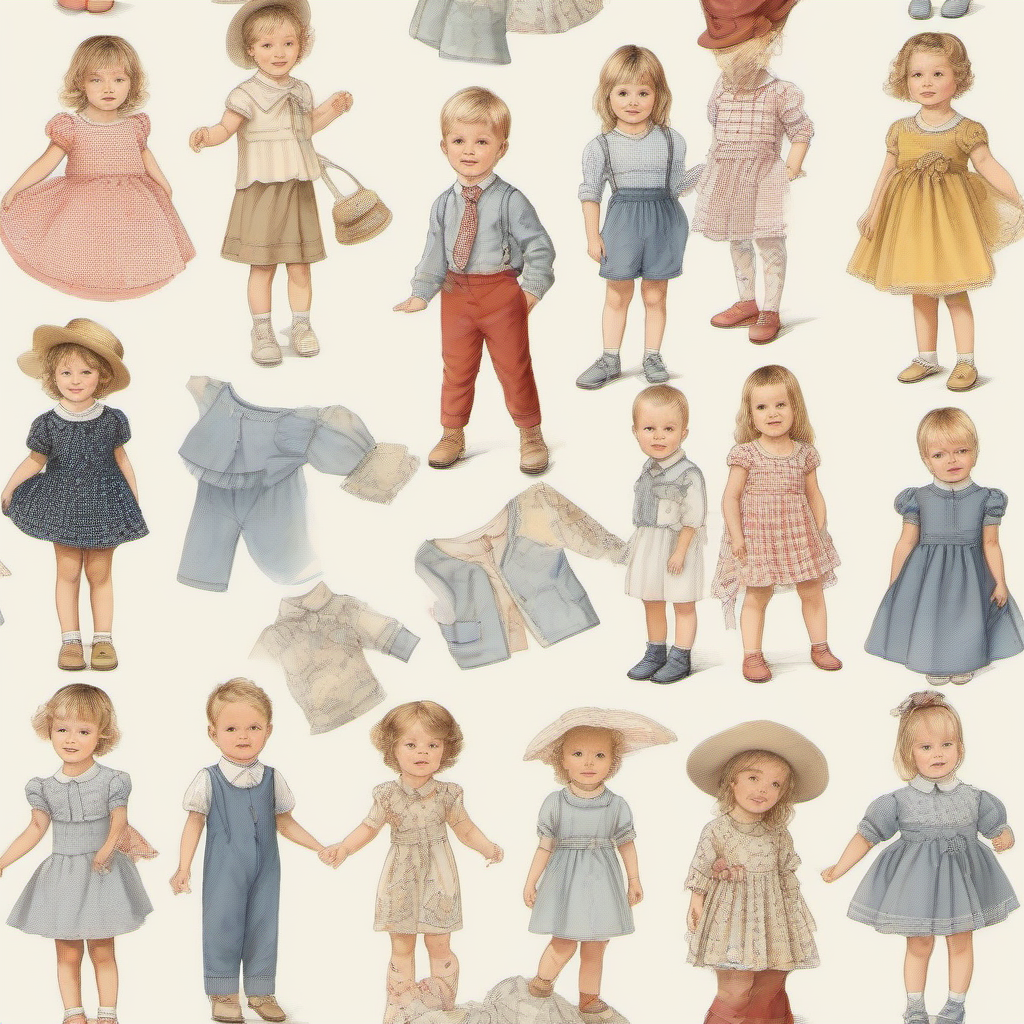Shopping for children’s clothing can be a delightful yet challenging experience. From understanding fabric choices to finding the perfect fit, this guide covers essential aspects to help you make informed decisions.
Understanding Children’s Clothing Fabrics
The choice of fabric plays a crucial role in comfort and durability. Common fabric types include:
- Cotton: Soft, breathable, and hypoallergenic, making it a popular choice for everyday wear. For instance, a simple cotton t-shirt can be worn comfortably all day at school or during playtime.
- Polyester: Durable and wrinkle-resistant, often blended with other fabrics, though it may lack breathability. Sportswear often uses polyester for its moisture-wicking properties.
- Denim: Sturdy and versatile, ideal for play but can be heavier and less flexible. A pair of denim jeans can withstand rough play while still looking stylish.
- Wool: Provides warmth for colder weather but can irritate sensitive skin if not blended properly. Merino wool is a great option for sweaters as it’s softer and less itchy.
While these fabrics have their advantages, some children may have allergies to certain materials, and synthetic fabrics like polyester may not be as breathable, leading to discomfort during active play.
Key Characteristics of Children’s Clothing
Children’s clothing often features specific characteristics designed for convenience and safety:
- Adjustable Waistbands: Allow for a better fit as your child grows, making it easier to wear the same piece for longer. For example, pants with elastic waistbands can accommodate growth spurts.
- Easy Closures: Zippers, Velcro, and elastic bands simplify dressing and undressing for both kids and parents. Look for jackets with easy zippers that children can manage themselves.
- Safety Features: Look for clothes without small buttons or choking hazards to ensure your child’s safety during play. Labels indicating “no small parts” can guide your choices.
Advantages and Disadvantages of Quality Children’s Clothing
Investing in quality children’s clothing comes with several benefits:
- Comfort: High-quality fabrics provide breathability and comfort, allowing children to move freely during their activities. For example, a well-made cotton dress can keep a child comfortable during a long day at school.
- Longevity: Durable materials withstand the wear and tear of active play, making them a cost-effective choice in the long run. A sturdy pair of shoes can last through multiple seasons of play.
- Style: Quality pieces often come in trendy designs, allowing children to express their individuality while staying comfortable. A stylish hoodie can be both fashionable and functional.
However, there are also some disadvantages to consider:
- Cost: Premium brands may come with a higher price tag, which can be a consideration for budget-conscious shoppers. A high-quality winter coat may cost more upfront but can last several years.
- Finding the Right Fit: Children grow quickly, making it challenging to find clothes that fit well for an extended period, leading to frequent shopping trips. Consider shopping for clothes that are slightly larger to accommodate growth.
Outfit Ideas for Different Occasions
Creating stylish outfits for your child can be fun! Here are some outfit ideas for various occasions:
- Casual Playdates: Pair a cotton t-shirt with denim shorts and sneakers for a comfortable look. This outfit is perfect for a day at the park.
- Formal Events: A button-up shirt with chinos and loafers creates a polished outfit for special occasions like weddings or family gatherings.
- Seasonal Wear: Layer a long-sleeve shirt under a cozy sweater with leggings and boots for winter outings. This keeps kids warm while looking stylish.
- Outdoor Adventures: Choose a moisture-wicking shirt with cargo shorts and sturdy sandals for a day at the park. This outfit is practical for running and climbing.
- School Days: Combine a graphic tee with joggers and slip-on shoes for a laid-back school outfit. This allows for easy movement and comfort throughout the day.
- Mixing Patterns: Try a striped shirt with floral shorts for a playful, trendy look. This encourages creativity and self-expression in children’s fashion.
Using a Size Guide for Smart Shopping
When shopping online, using a size guide is essential for ensuring the best fit. Here are some tips:
- Measure Accurately: Use a measuring tape to get your child’s chest, waist, and inseam measurements. This ensures you select the right size based on actual measurements.
- Refer to Size Charts: Always check the specific brand’s size chart, as sizing can vary between manufacturers. A size 6 in one brand might fit differently in another.
- Consider Growth: If your child is in between sizes, it may be wise to size up for longevity. This allows for more wear before needing to buy new clothes.
FAQ
Q: How do I know if the fabric is suitable for my child?
A: Look for breathable, hypoallergenic fabrics like cotton, and avoid materials that may cause skin irritation.
Q: What should I look for in a size guide?
A: Focus on accurate measurements of your child’s chest, waist, and inseam, and compare them to the brand’s size chart.
Q: Are there benefits to buying higher-priced children’s clothing?
A: Yes, higher-priced clothing often uses better materials, providing comfort and durability that can save you money in the long run.
Q: How can I make sure my child’s outfit is safe?
A: Avoid clothing with small buttons or loose strings, and opt for features designed for safety, such as adjustable waistbands.
